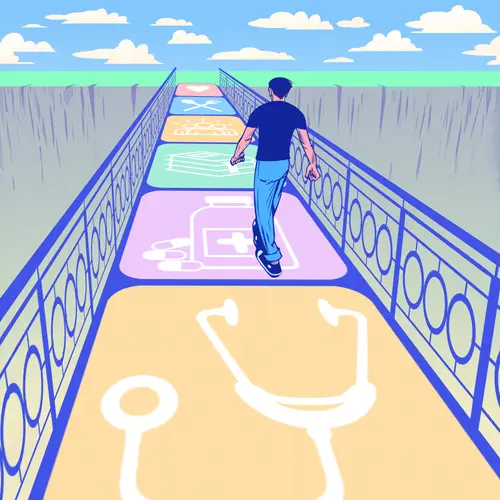Managing your blood pressure and cholesterol is a part of taking care of your heart’s health. That’s because high blood pressure and cholesterol bring a greater risk of heart attack, stroke, and other health problems. Knowing if there’s an issue is a first step to taking control.
When to Check Blood Pressure
Blood pressure is easy to measure with an inflatable cuff around your arm and anyone over the age of 18 should have it checked. Your doctor or other health providers likely check it anytime you go in for a visit. It’s best to check your blood pressure at least once every couple of years. If you’ve had a borderline or high reading in the past, it’s a good idea to check it more often.
High blood pressure doesn’t always come with any warning signs. But over time, it can lead to serious health problems. Checking your blood pressure often will help you know what’s normal for you and catch any problem sooner.
Monitoring Blood Pressure at Home
Blood pressure normally rises and falls over the course of a day. So you won’t get the same reading every time. Especially if you have reason for concern about your blood pressure, it can be a good idea to keep tabs on it at home. It’s easy to find at-home blood pressure monitors.
The American Heart Association offers these tips to get a good blood pressure reading at home:
- Stay still. Don’t take a reading within 30 minutes of exercise. To prepare for a reading, empty your bladder and sit quietly for at least 5 minutes.
- Don’t smoke. It’s best to avoid smoking or drinking caffeine within 30 minutes of taking a reading.
- Sit up straight. Make sure your back is supported. Keep your feet flat on the floor and on a flat surface.
- Check the time. Measure your blood pressure at the same time each day. It’s especially good to check daily if you’ve recently made a change to medications.
- Take two. Take the reading two or three times, waiting a minute between them. This will help to ensure you’ve gotten an accurate reading.
When to Check Cholesterol
Cholesterol is a waxy substance in your bloodstream. It can build up in your arteries. High cholesterol doesn’t have any symptoms. So a blood test is the only way to know if your cholesterol levels are higher than they should be.
It’s a good idea to start testing early. Young adults should have their cholesterol checked at least once by age 21. After that, adults should have a cholesterol check at least once every 4-6 years.
Check more often if you have other risk factors, such as:
- A family history of heart disease or high cholesterol
- Diabetes
- Older age
- Being overweight
Home Cholesterol Kits
You can buy cholesterol test kits to check your levels at home. Some of them give accurate readings. But it depends on the kit and how well you follow the directions.
Another thing to consider is that these at-home kits might not give you as much information as the test your doctor would give. That’s because many of them measure only total cholesterol. They can’t tell you how much of that cholesterol is “bad” LDL cholesterol and how much is “good” HDL cholesterol.
An at-home kit might be useful if your doctor suggests keeping tabs on cholesterol between visits. But for the most part, it’s probably best to leave cholesterol testing to the experts.
When to Call the Doctor
If you’ve had your blood pressure or cholesterol checked at the doctor’s office, your health care providers can help you to understand the results. They’ll also consider the results in the context of any other potential risk factors you may have.
A cholesterol test may give you more than one number:
- Total cholesterol. A normal total cholesterol reading is less than 200 mg/dL.
- LDL cholesterol. A normal LDL cholesterol reading is less than 100 mg/dL.
- HDL cholesterol. It’s good to have an HDL cholesterol of more than 60 mg/dL.
- Triglycerides. This is another type of fat in blood. Normal levels are less than 150 mg/dL.
If you’ve tested cholesterol at a health fair or at home and you got a high reading or you aren’t sure, call your doctor.
If you’re keeping tabs on your blood pressure at home, keep in mind that a normal blood pressure reading is less than 120/80 mm Hg. Call your doctor if you get a consistently high reading or you notice a change.
If your blood pressure suddenly exceeds 180/120 mm Hg, wait a few minutes and check again. Blood pressure that’s this high can immediately damage organs and is a medical emergency. If this happens, call 911.
Many people have high blood pressure or cholesterol. But too many of them don’t know they have it. By checking your numbers, you’ll know if it’s time to take steps to help lower your risk of a more serious health problem.

